Concrete Pile foundation: Different Types and Its Design Formula
Pile foundation is one type of deep foundation. A Pile foundation is a series of columns that are constructed or inserted into the ground to transfer loads to rocks or soil that have a high bearing capacity.
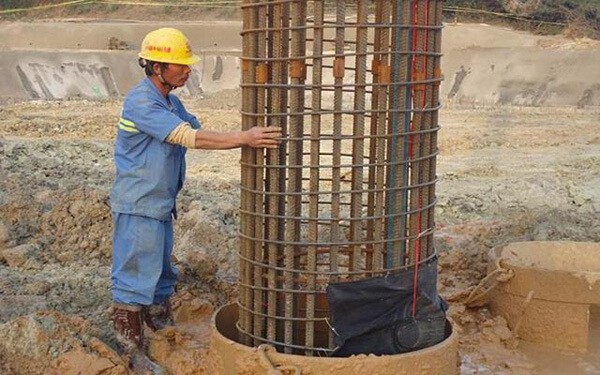
When the structure constructed are large and heavy then we have to use a pile foundation to avoid damage to the structure.
They are made of long and cylindrical elements, which are made up of steel or reinforce concrete, or sometimes timber. When the depth of a foundation is more than three times its breath then it is termed as “piled”.
In this article we will be discussing a certain type of pile called as concrete pile foundation. There are most commonly found type of the pile in building construction. They also find there use in deep sea applications due to their extra ordinary ability to resist the corrosion.
Contents
Where We Can Use Pile Foundation
Following are some conditions in which we can use pile foundation:
- When the groundwater water level is high.
- In the situation when other types of foundations are not practical or suitable.
- When there is compressible soil at shallow depth.
- When the construction location is near the river bed or seashore, etc.
- If there is the existence of any canal near the structure.
- When there is a heavy invasion of seepage and it becomes impossible to keep the foundation trenches dry by pumping or any other means.
Types of Pile Foundation
Pile foundations can be categorized based on their installation procedure, and materials, etc. Following types of pile foundation are used in construction:
On the basis of function or use
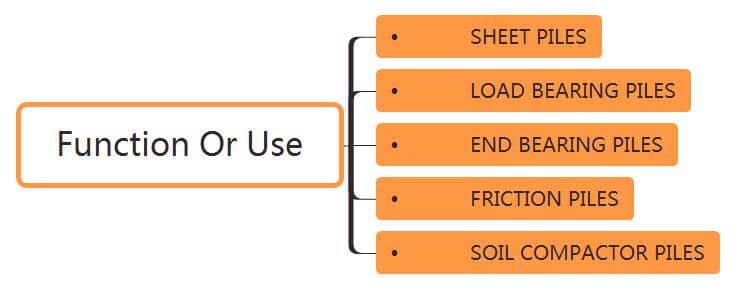
- Sheet Piles
- Load Bearing Piles
- End bearing piles
- Friction Piles
- Soil Compactor Piles
On the basis of materials and construction method

- Timber Piles
- Steel Piles
- Composite Piles
- Concrete Piles
Concrete Pile Foundation
Concrete piles similar to the drilled shafts are one of the most important categories of foundations.
Despite their hefty costs, they are most commonly used to transfer loads of a heavy superstructure (buildings, bridges, skyscrapers, etc. to the lower strength, and much stable layer of the soil, usually a hard rock is preferred.
There are two types of concrete pile foundation based on the method they are constructed.
Pre-cast Concrete Pile
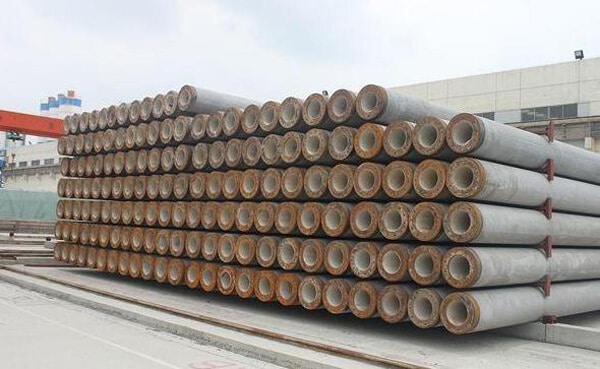
Precast piles are mostly strengthened with steel to avoid any type of breakage when it is being moved from the casting bed to the location of the foundation.
Curing has to be performed after the piles are cast. Most of the time the curing period for pre-cast piles is 21 to 28 days.
Cast-in-Palace Concrete Piles
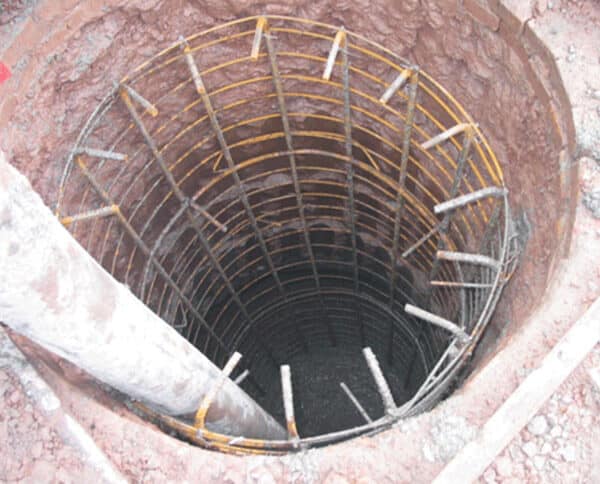
Cast in palace concrete piles is constructed either by driving a metallic shell to the ground, that will create a hole, then filling it with concrete and leave the shell with the concrete.
The other method is that we pull out the shell while concrete is poured.
When And Why To Use
Various types of concrete pile foundation are used for different applications.
Pre-cast concrete piles (driven shafts) or Cast-in-place concrete piles are two great examples of how they can be manufactured (made) and installed.
Following conditions pertain to the use of concrete piles:
- Poor quality soil in the upper layers of the earth
- Expansive soil is found below the building site that may cause unrest to the building foundation
- Concrete piles can also be used to resist the uplift pressures.
- They are also used in the condition when the building has to experience a huge amount of lateral loads.
- They are also used in bridge abutment and piers
The Design Formula Of Concrete Pile Foundation
The design of concrete piles involves the following steps:
- The design process of piles involves first the calculation of loads from the building foundation, which need to be transferred via piles to the hard strata we are targeting on. The force P acting on the pile is proportional to the displacement U due to the compression.
Where,
E is the Elastic modulus of pile material; A is its area and U is the elastic displacement.
- The next step is to calculate the bearing capacity of hard strata, on which the piles would be resting.
- To check the capacity of the pile, they are designed as ordinary concrete columns following the relevant standard. Following formulation is used in several forms by the code to calculate the axial load capacity of a concrete pile:
Where P is axial force, M is bending moment on the pile while A, y, I are the geometrical properties.
Control The Quality
It is quite challenging to control the quality of concrete pile foundation.
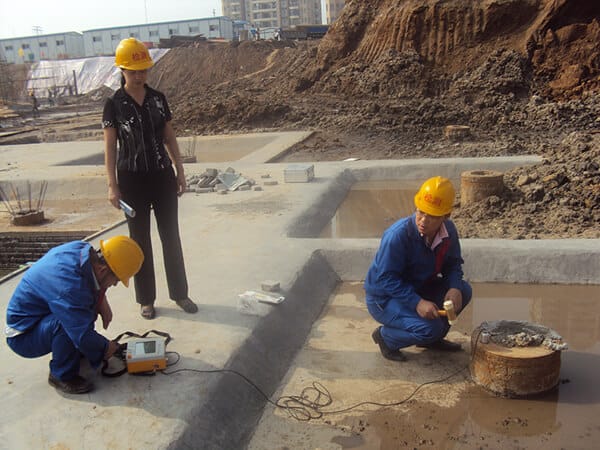
Most of the time engineers and contractors verify the strength, and consistency of pile materials by well-established and experienced process and test standards.
The defects that might have happened during the pile casting (in the case of cast-in-place piles), transportation, and installation (in the case of precast piles) can be tested and checked by Non-destructive testing.
Many different types of methods can be used to check the quality of concrete piles. Apart from general concrete tests (concrete cylinder samples, and slump test), different non-destructive testing (NDT) methods can be used to evaluate the quality and reliability of concrete piles. We can use these tests to check the integrity and quality-related issues.
The following most accepted and used NDT methods are used to check the integrity of piles:
- Low Strain Impact Integrity Testing
- Ultrasonic Cross Hole Testing for piles with the accessible tip
- Parallel Seismic for piles covered up by pile-cap
Hence, in this way, the quality control of concrete piles is done.
Conclusion
In this article, the different types of pile foundations based on their function, materials, and construction method are listed. Then an in-depth description of the concrete piles is given.
An explanation of the conditions and the situation in which these conditions may occur, where concrete piles can be used, is given.
Moreover, information on the quality control process of the concrete piles’ construction is also given. It also includes the design process of concrete pile foundation including the formula and load calculation process.
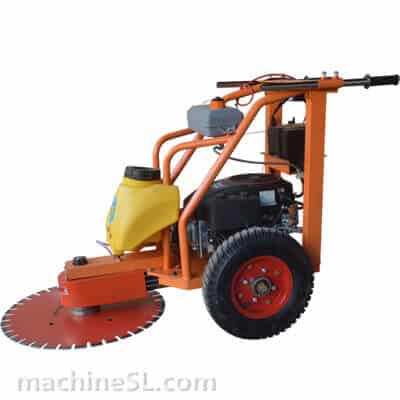
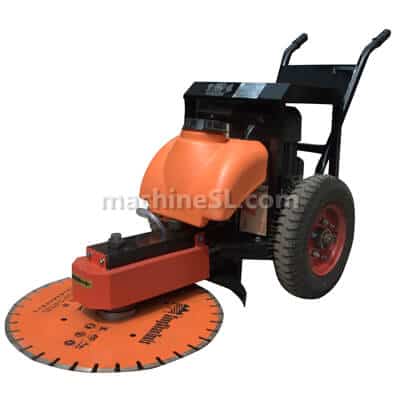
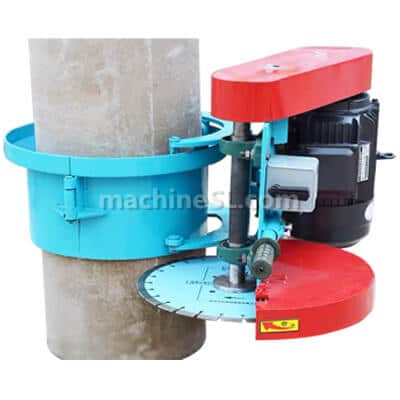
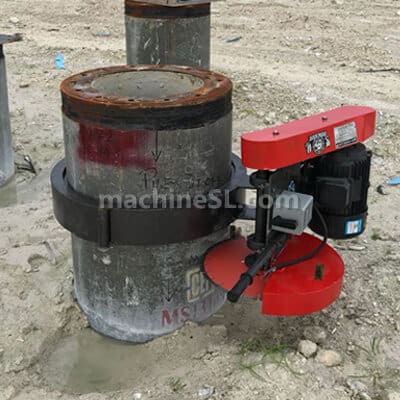
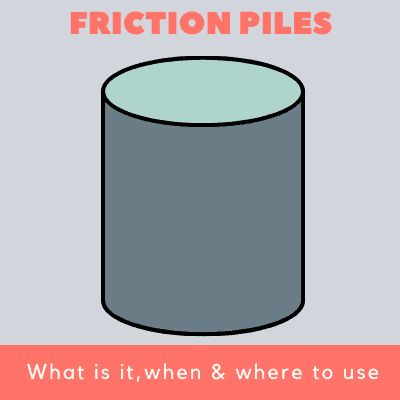
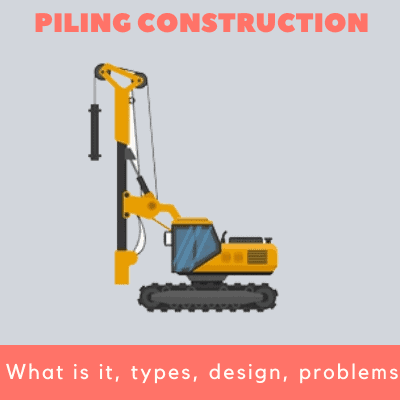
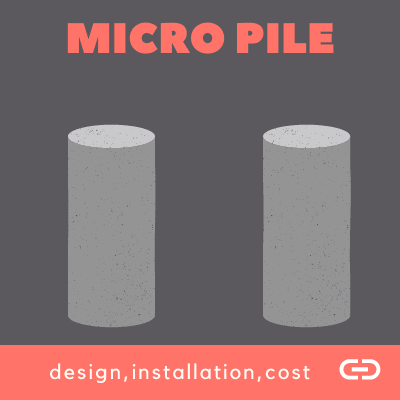
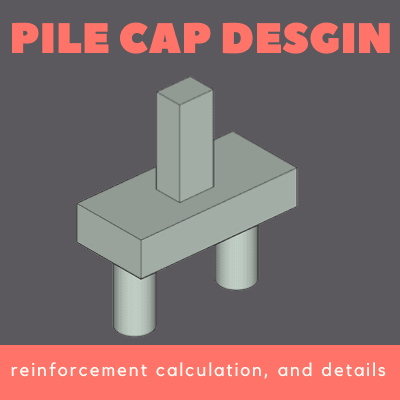
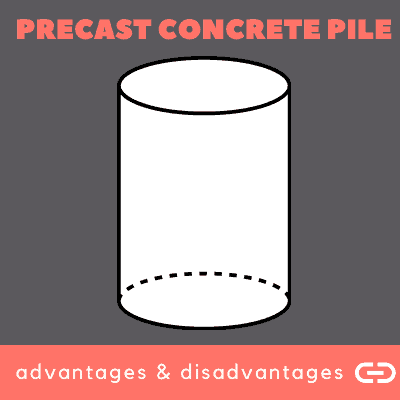
Hi there! My cousin is currently involved in the construction of a café near his house. I really appreciate it when you mentioned that concrete foundation is crucial to withstand certain pressures. I’ll make sure he looks further into this matter so everything will be done safely later.
thanks